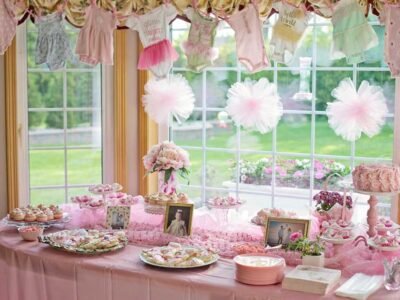Exhibitions, shopping malls and trade shows would present an entirely different landscape without the uplifting nature of visual displays. How can a business best showcase its products, services, or brand messages without them?
Yet, with the growing concern for our planet’s health, event organisers are tasked with considering the environmental impact of their displays. There’s an increasing trend towards eco-friendly displays that put the environment first without compromising quality – but how do they match up against traditional displays?
Today, we’re pulling back the curtain on traditional and eco-friendly displays to present a clear picture of both, helping you appreciate what’s causing us to think greener.
Traditional Event Displays
By traditional, we’re referring to the types of displays used in events spaces since the late 1800s and the birth of retail. Tried and tested, they have graced many a marketing campaign since and continue to do so – although the tides are certainly turning.
The trouble with traditional event displays is that they tend to use non-biodegradable materials and therefore harmful to the environment. Materials like PVC, plastic, and certain metals are easy to obtain but not so simple when it comes to their disposal – that’s alongside the ‘not-so-green’ methods used in their production.
Common materials used in traditional event displays
- PVC (Polyvinyl Chloride): A widely used plastic material known for its durability and versatility, PVC is often used in banners, backdrops, and signage. However, PVC releases toxic chemicals during its production, and the end product is non-biodegradable.
- Plastics: Beyond PVC, other plastics like acrylics and polystyrenes are popular because of their lightweight properties and translucency – yet these plastics can take hundreds of years to decompose.
- Metals: Aluminum and steel frames are common in traditional displays for their strength and rigidity. While metals can be recycled, the mining and refining processes are energy-intensive and can lead to habitat destruction and pollution.
Environmental concerns associated with traditional displays
The materials used traditionally in visual displays are readily available and quick to conjure something incredible. Yet, each poses a significant environmental challenge – from depleting non-renewable resources and high energy consumption to generating persistent waste.
Let’s break down each of these concerns individually.
- Resource depletion:The production of traditional display materials often relies heavily on non-renewable resources. For instance, extracting crude oil for plastics or mining bauxite for aluminium can deplete natural reserves and disrupt ecosystems.
- Energy consumption:The manufacturing processes for materials like metals and plastics are energy-intensive. From extraction to refining and then to shaping, these processes often rely on fossil fuels, leading to significant carbon emissions.
- Waste generation:One of the most pressing concerns is the waste generated by traditional displays. Since many of these materials are not biodegradable, they can persist in the environment for centuries. When discarded, they often end up in landfills, where they can leach harmful chemicals into the soil and groundwater.Moreover, the sheer volume of waste from large events, where displays are used once and discarded, exacerbates the problem.
These issues snowball into one huge problem, pushing the industry to pivot towards more sustainable solutions.
Eco-Friendly Alternatives
Fast-forward to the turn of the century – bringing new materials, methods of production and a more eco-conscious mindset.
Eco-friendly event displays represent a paradigm shift in the event industry, emphasising the use of sustainable materials and environmentally-conscious practices. Unlike traditional displays, these eco-friendly alternatives are designed with the planet’s well-being in mind, working hard to minimise a brand’s carbon footprint.
Common materials and examples of eco-friendly displays
The rise of eco-friendly displays has brought with it a range of innovative materials that are both sustainable, affordable and effective. Among the most popular ones are:
- Re-board:A lightweight, yet sturdy material, Re-board is known for its recyclability and versatility. It can be shaped into various forms, making it a favorite for creative displays.
- Bamboo:As one of the fastest-growing plants, bamboo is a renewable resource. Its strength and flexibility make it an excellent choice for various display structures.
- Recycled Fabrics:Using fabrics made from recycled materials, such as PET bottles, not only reduces waste but also provides a soft and durable medium excellent for banners and backdrops.
Key benefits of eco-friendly alternatives
- Reduced environmental impact:Eco-friendly displays significantly diminish the environmental challenges associated with traditional setups. Due to the sustainable materials and processes, they often have a lower carbon footprint. The waste generated is also considerably reduced, especially when materials are recyclable or biodegradable.
- Sustainability benefits:Beyond the immediate environmental benefits, eco-friendly displays promote a culture of sustainability. By opting for renewable resources and materials that have a lesser impact on the planet, businesses can showcase their commitment to a greener future.
- Long-term cost efficiency:While the initial investment in eco-friendly materials might be slightly higher, the long-term benefits are substantial. Reusable materials mean displays can be repurposed for multiple events, incurring ongoing savings. Additionally, reduced waste management costs and potential tax benefits for sustainable practices can further enhance the cost efficiency of these alternatives.
Environmental Impact Assessment
At-a-glance comparative analysis of traditional vs. eco-friendly displays
| Aspect | Traditional | Eco-Friendly |
| 1. Carbon Footprint | – High due to energy-intensive production and transportation. | – Significantly lower; sustainable materials and processes reduce emissions. |
| 2. Resource Usage | – Relies on non-renewable resources like crude oil and metals. | – Prioritizes renewable materials like bamboo and recycled fabrics. |
| 3. Waste Generation and Disposal | – Produces long-lasting waste, often ending up in landfills. | – Minimized waste; materials are often recyclable or biodegradable. |
Case studies illustrating the environmental impact
Over the past few years, the event industry has witnessed a transformative shift towards sustainability, with numerous events leading the charge in adopting eco-friendly displays. These pioneering events are real-world examples, demonstrating the tangible benefits of making the switch.
For instance, at a recent international trade show, organisers opted for displays made entirely of Re-board and recycled fabrics. The result was a significant reduction in the event’s carbon footprint. These materials were lightweight, reducing transportation emissions, and they were also easily recyclable, ensuring minimal waste at the event’s conclusion.
These events, among countless others, have spotlighted the dual benefits of eco-friendly displays: a significant reduction in waste generation and a marked decrease in energy consumption. As more marketing and retail events adopt these practices, the industry sets a precedent while proving that environmental responsibility and an event’s success can go hand in hand.
Why NOW is the time for eco-friendly displays
-Economic considerations
While initial costs for eco-friendly options might appear higher, the long-term savings are substantial.
-Industry regulations and standards
Many industries are now mandating the use of sustainable practices in events.
-Consumer preferences and demand
A growing number of consumers prefer brands that prioritise sustainability.
-Corporate sustainability goals
Companies are setting sustainability targets, and influencing their choice of event displays.
Our Recommendations for Sustainable Event Displays
Practical Steps for Event Organisers and Businesses:
Event organisers and businesses should prioritise the use of reusable materials like Re-board that can serve multiple events, reducing the constant need for new resources. Collaborating with suppliers committed to eco-friendly practices and materials is another essential step. By doing so, the entire supply chain becomes more sustainable. Additionally, it’s crucial to implement strategies that minimise waste during events. This can be achieved through measures such as setting up recycling stations and opting for digital handouts over printed materials.
Collaboration and Partnerships:
Aligning with organisations dedicated to sustainability can significantly enhance an event’s green credentials. These eco-partnerships bring in expertise and resources that can guide event organisers towards more environmentally-friendly decisions. Furthermore, there’s an opportunity to co-create displays that not only captivate audiences but also champion the cause of eco-consciousness.
Promoting Awareness and Education:
Training staff to ensure they understand the importance of sustainability is fundamental. When the entire team is on board and equipped with knowledge, implementing green practices becomes more seamless. Event organizers should also engage with their partners, encouraging them to adopt and promote sustainable practices. This creates a unified approach towards eco-friendly solutions. Lastly, events are powerful platforms to educate attendees. By informing them about the importance of sustainability and showcasing green initiatives, attendees can become active participants in the drive towards a more sustainable event industry.
Final Words
As you can see, it’s evident that the transition from traditional event displays to eco-friendly alternatives is more than just a passing trend; it’s critical. As we’ve delved into the comparative impacts of both types of displays, the advantages of sustainable choices have become clear.
The health and well-being of our planet hinge on the decisions we make today. Each choice, no matter how seemingly insignificant, contributes to the larger picture of environmental health. By opting for sustainable event displays, we’re reducing our carbon footprint and sending a powerful message about the values we uphold.
Businesses wanting to succeed must champion the cause of sustainability, leading the charge and ensuring each event stands as a testament to an unwavering commitment to the environment.
NEXT Printing is a leader in eco-friendly display printing for retail, trade shows and exhibitions in Australia.
Using pioneering materials like Re-board, our team combines the spectacular with the sustainable to ensure your events leave a lasting impression and maximum impact on your customers.
Ready to take your event displays up a level?


















Comments